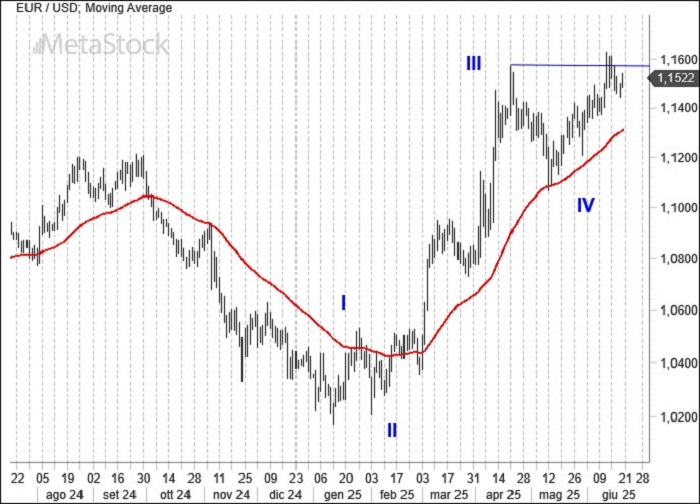- The escalating conflict between Israel and Iran, with nuclear sites targeted and U.S. involvement, is a central concern weighing on monetary policy decisions.
- The Federal Reserve kept interest rates unchanged and remains largely dismissive of near-term rate cuts, much to Trump’s fury. Growth expectations have been revised downward, and Powell now faces the added challenge of factoring in a war scenario.
- In Europe, rates continue to linger at historic lows, though slight increases are emerging at the short end of the yield curve.
- EUR/USD is attempting to break through the 1.16 mark—so far without success. Geopolitical tensions are helping the dollar hold its ground, but structurally, it remains technically fragile.
Trump Lashes Out at Powell, But the Fed Stays the Course
Geopolitical risks are on the rise amid a tangle of escalating conflict and only modest diplomatic efforts to halt the war between Israel and Iran. Strikes on nuclear sites and the direct U.S. involvement risk broadening the conflict regionally, adding to the war in Ukraine, which has faded from the headlines.
Naturally, war tensions are feeding into oil prices, which remain elevated. Markets are bracing for potential inflation spikes should the Persian Gulf become a hostile environment for crude shipments.
The focal point of the week was, of course, the FOMC meeting. Hopes for hints of rate cuts had been fueled by the recent improvement in inflation data, but the surge in Middle East tensions and the accompanying oil price rally made it unlikely that Powell and the Fed would act anytime soon—especially with soft retail sales figures offering little additional incentive.
And that’s exactly how it played out. The war of words between Trump and Powell didn’t rattle the markets. The Fed emphasized that inflation and the labor market—the two areas under its mandate—are progressing along their desired paths: inflation cooling, and the labor market steadying.
Trump, who labeled Powell “stupid” as he eagerly eyes naming a successor to the Fed Chair he himself appointed, watched as Powell summed up what was a deeply divided FOMC. Eight members foresee two cuts by year’s end, two predict one cut, and seven expect no change at all. The Fed cut its 2025 growth forecast to 1.4%, projecting 1.6% in 2026, when inflation is expected to settle at 3%.
The dollar appeared largely unmoved by all this news.
Technical Analysis: EUR/USD Bull Trap or Consolidation?
It remains to be seen whether EUR/USD’s move toward 1.16 was merely a bull trap in what could still be a developing wave 4. Ideally, a renewed dollar rally would target the 1.12–1.13 zone as a point where those betting on a more significant EUR/USD peak in the months ahead might look to reduce their dollar exposure. The 50-day moving average offers a solid technical support level where euro buyers may look to rebuild long positions.

Having broken through the 100 support level, the Dollar Index looks poised for further declines—only the war climate seems capable of delaying that outcome. The Fed’s decision to hold rates steady offers some short-term support, but a test of long-term support levels appears inevitable. Traders are likely to see this as an opportunity to consider strategic dollar positions.



Leave a Reply
You must be logged in to post a comment.